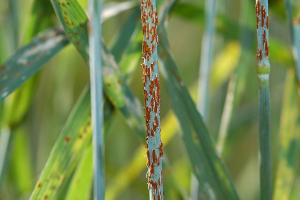 In the 1960’s, a biologist by the name of Norman Borlaug created several strains of high yield, disease resistant wheat. He developed these strains in countries like India, Mexico, and Pakistan, and with the help of modern agricultural techniques, he helped these countries double their wheat yields in less than a decade. Borlaug’s crops were so successful at bringing food security to the third world, that it’s estimated his efforts have since saved over a billion lives.
In the 1960’s, a biologist by the name of Norman Borlaug created several strains of high yield, disease resistant wheat. He developed these strains in countries like India, Mexico, and Pakistan, and with the help of modern agricultural techniques, he helped these countries double their wheat yields in less than a decade. Borlaug’s crops were so successful at bringing food security to the third world, that it’s estimated his efforts have since saved over a billion lives.
That should give you a pretty good idea about how important wheat is to the global food supply. There are literally billions of people who are living right now, because modern civilization is so good at growing this stuff. Imagine what would happen if something threatened even a small percentage of the world’s wheat yields.
Unfortunately, that something exists and it goes by the name of Ug99, a strain of stem rust fungus that is known to kill wheat plants.
Since 1998, Ug99 has been sweeping its way across Africa to the Middle East from its origin in Uganda. Altogether, 11 confirmed races in the Ug99 lineage have been detected in Egypt, Ethiopia, Eritrea, Iran, Kenya, Mozambique, Rwanda, South Africa, Sudan, Tanzania, Uganda, Yemen and Zimbabwe, showing that the pathogen has evolved and expanded widely, according to recent research by Singh, Hodson and collaborators.
Trans-boundary pathogens blown by the wind, spread by travel and commercial trade, pose an increasing threat to global food security. Emerging strains colonizing new areas can cause significant crop losses. Pathogen changes in one region can quickly migrate with serious consequences to more distant regions.
So just how bad is Ug99? When a single spore lands on a wheat farm, it’s been known to eventually multiply and kill 100% of the crop, before making the leap to neighboring farms. Though there are some breeds of wheat that are resistant to it, less than 10% of the farms in the countries where it has shown up, actually grow them. And many of these wheat strains are of the same variety that Norman Borlaug developed decades ago. Thus, the spread of this stem rust threatens to derail decades of agricultural progress in the third world.
But truth be told, it may not stay in the third world for very long. Much like a virus, stem rust can ‘infect’ people. The spores can cling to clothing and travel anywhere in the world. Each acre of stem rust infected wheat can create billions of spores, so it wouldn’t be far-fetched for someone to brush shoulders with one of these crops, and spread it to anywhere in the world.
In any case, it could still make the leap to the developed world even without human help. It’s widely believed that stem rust spores could conceivably be blown across the ocean and into Australia, one of the world’s largest wheat producers. And if it can make it there by natural forces, it can make it anywhere.
While the scientific community is busy trying to figure out a way to deal with this threat, the Ug99 fungus has always been one step ahead of them. It’s a rapidly evolving organism that has adapted to nearly every strain of wheat that it has come across. Fortunately, dozens of wheat genes that are resistant to it have been discovered, so there is some hope that it can be beaten in much the same way that it was beaten in the past: by breeding resistant strains of wheat with the ones that aren’t resistant.
However, a successful breeding program would take years to develop. In fact, you would probably need separate programs for different regions and climates. And once several highly resistant plants were created, it would take several more years before the world’s farmers could make the switch to the new wheat strains. Until that happens, Ug99 will loom over the global food supply, threatening to eliminate sustenance for millions, or perhaps even billions of people.

why do I smell a rat?